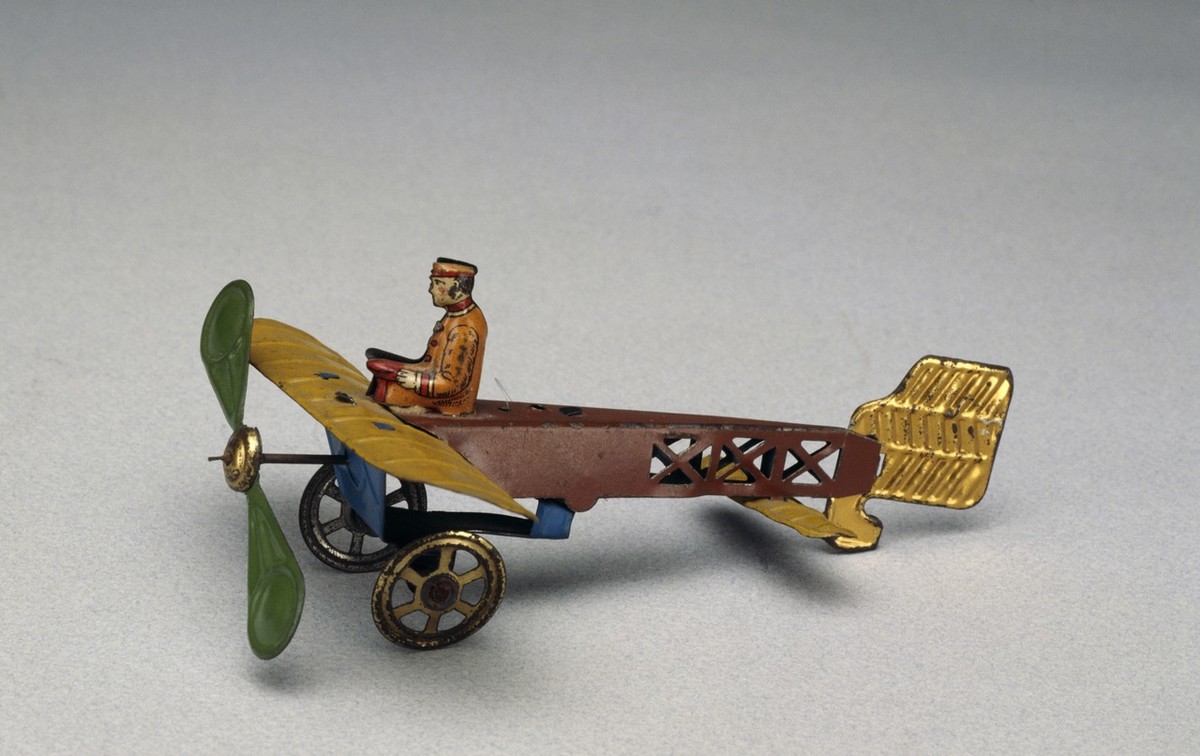Toy Plane with Pilot by Penny Toys (1912)
Abstract
The German toy-making industry was legendary. In the 1700s, peddlers working throughout Europe profited handsomely from wooden toys handcrafted in the forested regions of the Thuringian and Saxon Erzgebirge. Later, German-made porcelain dolls and Steiff company teddy bears populated children’s bedrooms and playrooms all over the world. The industrial age also brought forth tinplate models of technological wonders, such as train sets and steam engines, for home entertainment. But the toy industry in Germany, as in other countries, served purposes beyond thrill and spectacle. It deliberately commodified knowledge in order to bring children into specific knowledge regimes and to inculcate national norms. For instance, in addition to functioning as a play object, this toy airplane from 1912 imparted an ethos of militarization that oriented boys toward national service in a particular mode of regimented masculinity. For the generation of boys who played with such toys, childhood play and adult military service existed in a very close relationship.
Source

Source: Plane with pilot/painted tin toy made by Penny Toys, Germany, 1912. Milan, Museo Del Giocattolo E Del Bambino.
© De Agostini Picture Library Collection/ De Agostini Editore